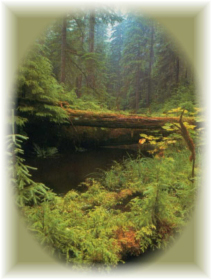 Conceptual
Outline
Conceptual
Outline
Overview of research plan
 Conceptual
Outline
Conceptual
Outline
Overview of research plan
The main objective of this project is to assess the viability of the central coast grizzly bear habitat in the face of continuing logging practices in this region. Specifically, the project focuses on the identification of those high quality grizzly habitat remaining in each of the region's watershed groups, as defined by the Watershed Restoration Program administered jointly by Ministry of Forests and Ministry of Environment, Lands and Parks (see, URL ref: http://www.env.gov.bc.ca/frco/programs/wrp/index.htm).
We also include an emphasis on low
elevation and old growth forest coverages. The key variables involved in
this project
include the elevation and slope
gradient, forest coverage classification, food sources and proximity to
developed urban
areas as well as to the other areas
of human activity. In order to identify the areas of high quality grizzly
bear habitat, multi-criteria analysis must be performed (see Cartographic
Model below).
Using a combination of ArcInfo, IDRISI
and ArcView geographic information systems (GIS) software packages,
we identify the following key variables:
• Land cover with low elevation
and slopes less than 30 degrees
• The presence of old growth forests
• Areas located within 150 meters
of Class 1 streams, reservoirs and lakes
• Areas of human activity and human
settlement
Due to the importance of the human factor
in determining unsuitable grizzly habitat, we suggest criteria to assess the
relative disturbance level for the most prevalent
human activities that the literature suggests to be detrimental to grizzly habitat
suitability. Therefore, we accentuate, urban development, active logging and
related heavy industry (primarily resource extraction) activities, hunting,
poaching, and other recreational activities such camping, hiking and fishing.
Cartographic Model
(Adobe Acrobat pdf)
